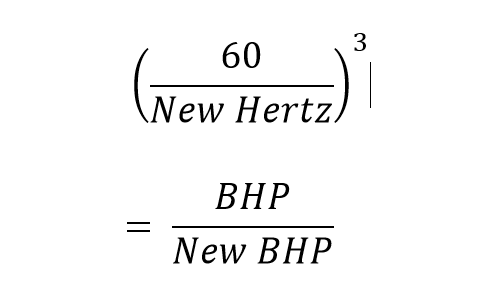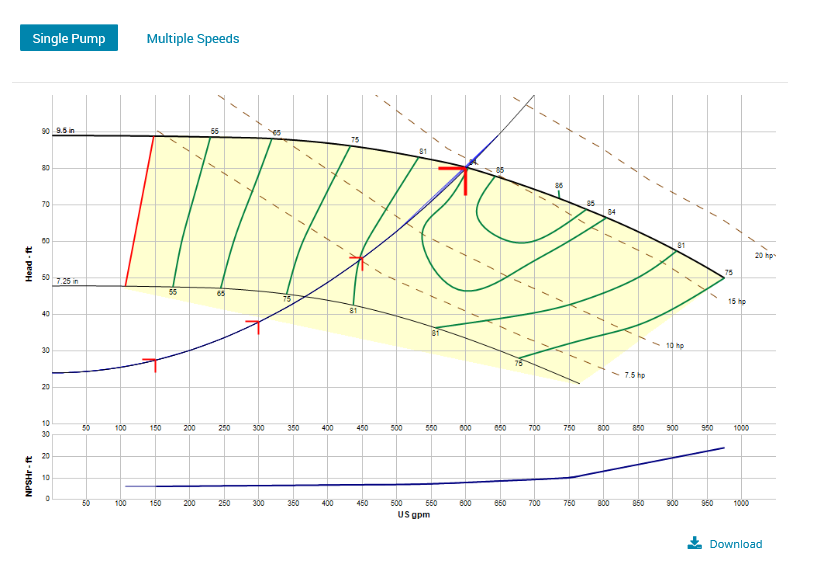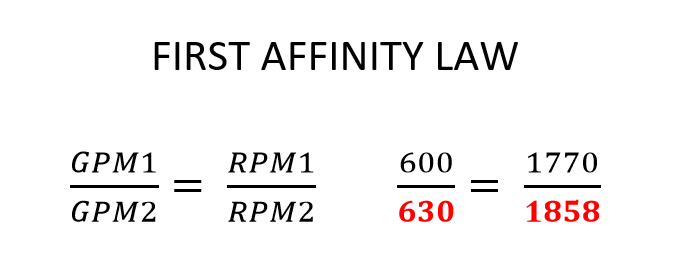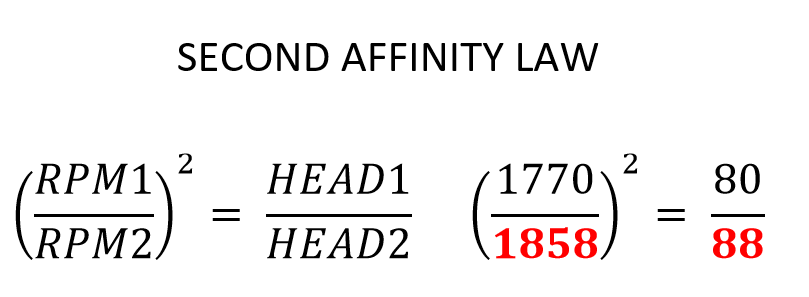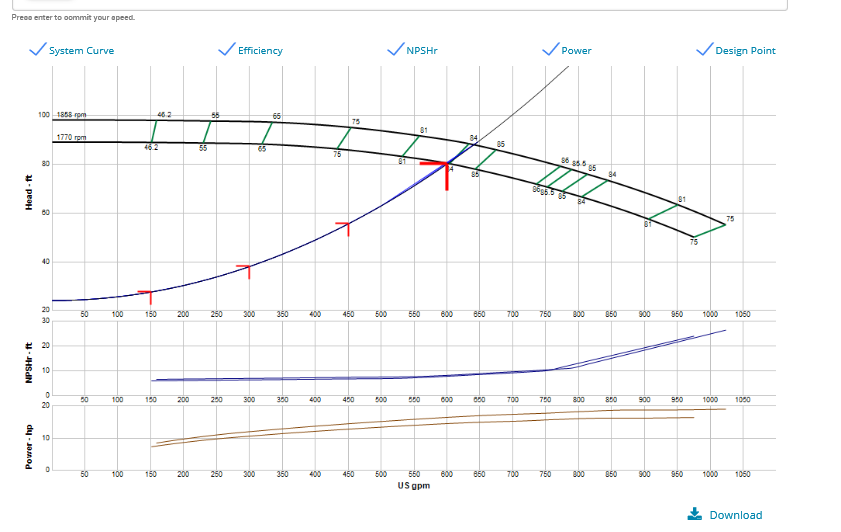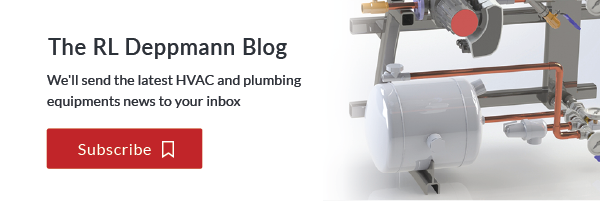There are times when a little more capacity or a little more safety factor is needed from a pump selection. Often, we are asked about increasing the speed of the motor above the nameplate rated RPM. This week the R. L. Deppmann Monday Morning Minutes looks at operating the pump above the rated RPM speed using a variable frequency drive.
Operating an HVAC Centrifugal Pump above 60 Hz for more capacity
Operating an HVAC centrifugal pump at a higher speed than the pump curve indicates may provide enticing advantages. The first reason is to gain additional capacity from the pump. In this scenario there is an existing pump which produces less flow or pressure than required. In recent years on a constant speed pump application, the contractor would request a price to provide a larger impeller to gain that added capacity. Today, we might accomplish the same result by increasing the speed of the drive. The analysis used is like the reduction in speed to simulate the trimming of an impeller. It all starts with the Pump Affinity Laws.
Increasing Pump Capacities using the Pump Affinity Laws
The pump affinity laws give us the relationship between flow, head, speed, and horsepower required for our closed hydronic systems. In the R. L. Deppmann basic pump seminar series, we spend time showing the relationship between these capacities using the laws. One mantra frequently heard in our offices is, “twice the flow needs four times the head.” The same holds true for motor speed. Using the pump affinity laws shown below, I could shout aloud. “Twice the speed gives twice the flow: Twice the speed gives four times the head: Twice the speed requires eight times the horsepower.”
Let’s assume you want to increase the speed by 5%. This is within the Bell & Gossett guidelines which we will detail in the next blog. Let’s look at an example. Let’s assume we have a closed chilled water system with a capacity of 600 GPM of water at 80 feet head. Let’s assume we selected a B&G e1510-4BD pump at 1770 RPM. How do the pump affinity laws work if we want to increase the speed by 5% using a VFD set at 63 Hz?
The design point is 600 GPM at 1770 RPM, 80 feet of head at 1770 RPM, and 14.5 brake horsepower at 1770 RPM. What do these numbers look like at 1858 RPM or 5% more speed?
So based on this we would expect the potential capacity to be 630 GPM at 88 feet but requiring 16.8 horsepower. Since the original selection would have a 20 HP motor to be non-overloading, the motor looks good. Let’s see what the curve looks like.
The selected B&G e1510-4BD is still non-overloading at 20 HP running at a higher speed of 1858 RPM.
Limitations and Concerns at Higher Speed
The first concern is that the drive and pump motor must be rated for the higher amp draw caused by higher horsepower. If the amp draw is larger than the rating of the drive, the drive protection will cause a trip.
Another issue is the pump and motor bearings. When a pump is available at a nominal 1800 RPM speed and at 3600 RPM speed, the components inside the pump change. The change occurs because the work done by the pump could be much greater. The changes may be larger bearings, bigger shaft, different seal, and/or different coupler. When does this occur? There is no fixed answer. This is why you should check the B&G manufacturer’s representative whenever exceeding the recommendations.
One last concern is the NPSH, or net positive suction head required by the pump. The NPSH increases at a greater rate than the speed. If we are over speeding a pump by more than 5%, we should check the NPSH available. This is more important in open systems such as cooling towers and in closed systems with temperatures over 200⁰F. Once we have the NPSH available, there is a safety factor applied since the exact NPSH varies slightly with manufacturing tolerances and due to entrained air in the hydronic system. The example above is a low energy pump, and the suggested safety factor is 1.3. As we change the speed of any pump, the energy of the pump may change, and the suggested safety factor will also change.
Next week the R L Deppmann Monday Morning Minutes will look at why we might overspeed and how to do it in the Bell & Gossett esp-Systemwize selection program.
Read the Entire How to Pick an HVAC Centrifugal Pump series:
- Part 1: Designing for Owner Satisfaction
- Part 2: Types of Pumps and Seismic Considerations
- Part 3: Mechanical Room Space & Type of Pump Selected
- Part 4: Pump Coupling Types — Close, Split or Flexible Coupled?
- Part 5: Choosing a Single or Double Suction Pump
- Part 6: Internally Vs. Externally Flushed Mechanical Seals
- Part 7: Mechanical Seal MaterialsTags
- Part 8: Motors for HVAC Centrifugal Pumps (Continued)
- Part 9: How to Pick HVAC Centrifugal Pump
- Part 10: Over Speed an HVAC Pump using a VFD
- Part 11: Best Practices for Safety and Performance

